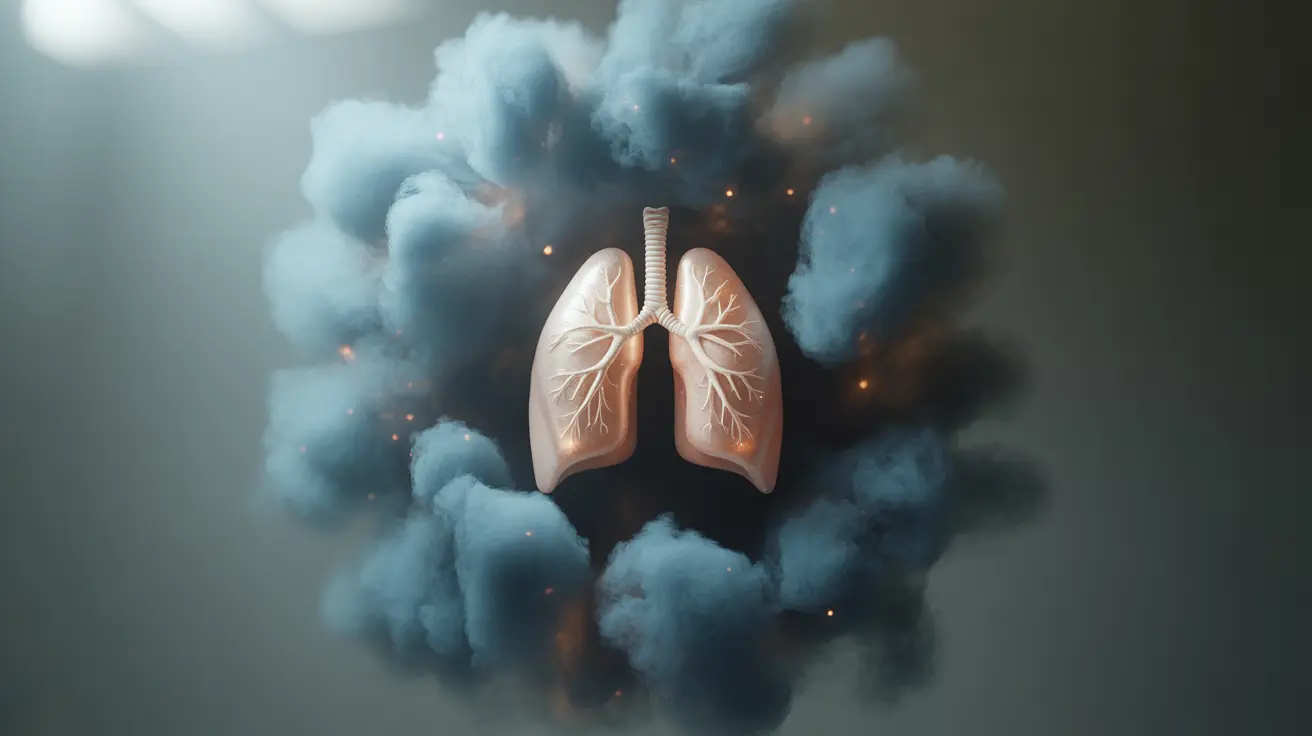While smoking is widely recognized as the primary cause of Chronic Obstructive Pulmonary Disease (COPD), approximately 25% of COPD cases occur in people who have never smoked. Understanding what causes COPD in non-smokers is crucial for prevention, early detection, and proper treatment of this serious respiratory condition.
This comprehensive guide explores the various factors that can lead to COPD development in individuals who don't smoke, including environmental exposures, genetic predisposition, and occupational hazards.
Environmental Factors Contributing to COPD
Environmental exposures play a significant role in the development of COPD among non-smokers. These factors can cause inflammation and damage to the airways over time, leading to characteristic COPD symptoms.
Secondhand Smoke Exposure
Regular exposure to secondhand smoke, particularly during childhood or in household settings, can significantly increase the risk of developing COPD. The harmful chemicals in secondhand smoke can cause similar damage to lung tissue as direct smoking.
Air Pollution and Poor Air Quality
Both outdoor and indoor air pollution contribute to COPD risk in non-smokers. Key environmental pollutants include:
- Vehicle emissions and industrial pollution
- Indoor cooking with poor ventilation
- Burning of biomass fuels
- Chemical fumes and particulate matter
Occupational Exposures and COPD Risk
Certain occupations carry an increased risk of COPD development due to regular exposure to harmful substances:
- Mining and quarrying work
- Construction and manufacturing
- Agricultural work
- Chemical processing
- Textile industry operations
Genetic and Developmental Factors
Some individuals may develop COPD due to genetic or developmental factors, independent of environmental exposures:
Alpha-1 Antitrypsin Deficiency
This inherited condition can cause COPD in people who have never smoked, often leading to earlier onset of symptoms. Regular screening is recommended for individuals with family history of early COPD.
Early Life Factors
Certain developmental issues can increase COPD risk:
- Premature birth
- Childhood respiratory infections
- Abnormal lung development
- Chronic asthma in childhood
Symptoms and Detection in Non-Smokers
COPD symptoms in non-smokers may develop more gradually and can include:
- Persistent cough
- Shortness of breath during physical activity
- Wheezing
- Frequent respiratory infections
- Chest tightness
Prevention Strategies for Non-Smokers
Taking proactive steps can help reduce COPD risk:
- Use proper ventilation when cooking or working with chemicals
- Wear appropriate protective equipment in high-risk occupations
- Avoid areas with high air pollution when possible
- Maintain good indoor air quality
- Regular medical check-ups, especially with risk factors present
Frequently Asked Questions
What causes chronic obstructive pulmonary disease (COPD) in people who have never smoked?
COPD in non-smokers can be caused by environmental factors (air pollution, secondhand smoke), occupational exposures to dust and chemicals, genetic conditions like alpha-1 antitrypsin deficiency, and early life factors such as premature birth or childhood respiratory infections.
How does exposure to secondhand smoke and air pollution contribute to COPD in non-smokers?
Both secondhand smoke and air pollution contain harmful particles and chemicals that can cause chronic inflammation and damage to the airways and lung tissue over time, leading to COPD development. Regular exposure to these pollutants can accelerate lung function decline.
Can genetic factors or abnormal lung development lead to COPD without smoking?
Yes, genetic conditions like alpha-1 antitrypsin deficiency can cause COPD without smoking. Additionally, abnormal lung development, premature birth, and chronic childhood respiratory conditions can increase the risk of developing COPD later in life.
What are the common symptoms of COPD in non-smokers and how do they differ from smokers?
Non-smokers with COPD often experience similar symptoms to smokers, including shortness of breath, chronic cough, and wheezing. However, symptoms may develop more gradually and might be initially attributed to other conditions, potentially leading to delayed diagnosis.
How can non-smokers reduce their risk of developing COPD from environmental and occupational exposures?
Non-smokers can reduce their COPD risk by using proper ventilation, wearing protective equipment in high-risk occupations, avoiding heavily polluted areas, maintaining good indoor air quality, and getting regular medical check-ups, especially if they have known risk factors.




